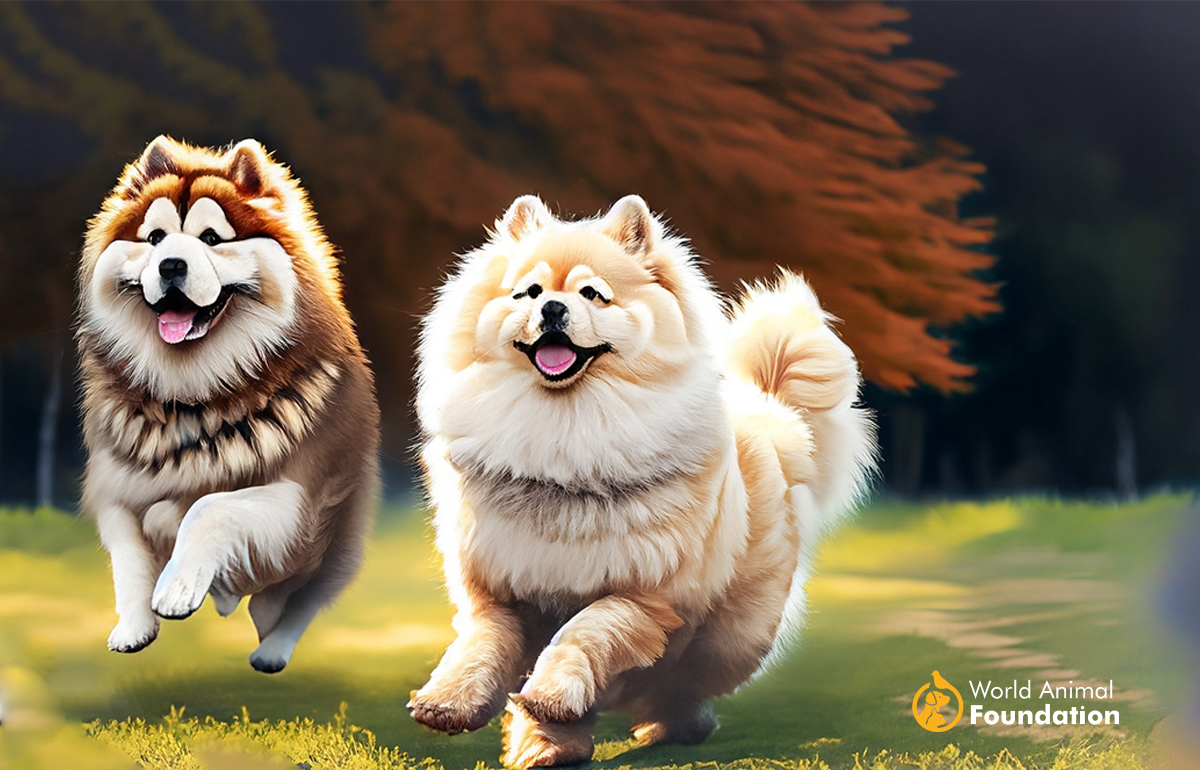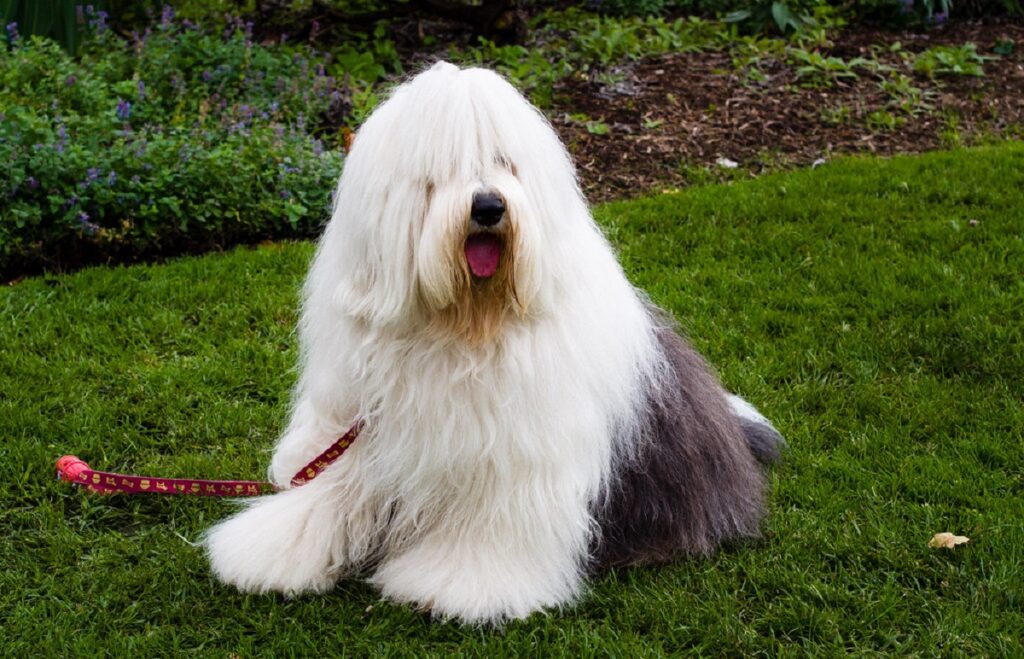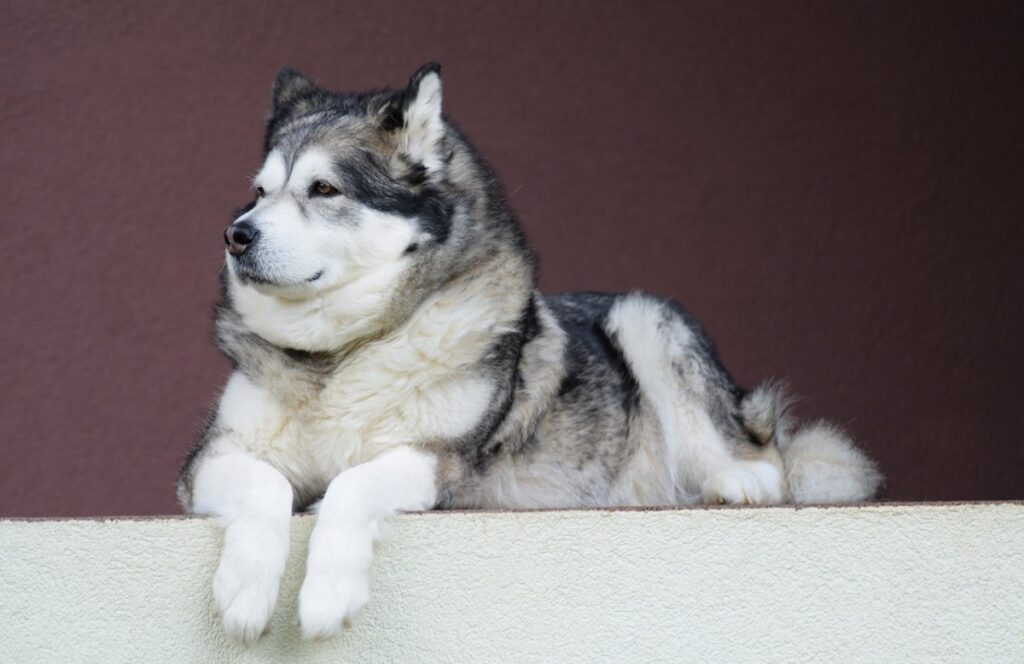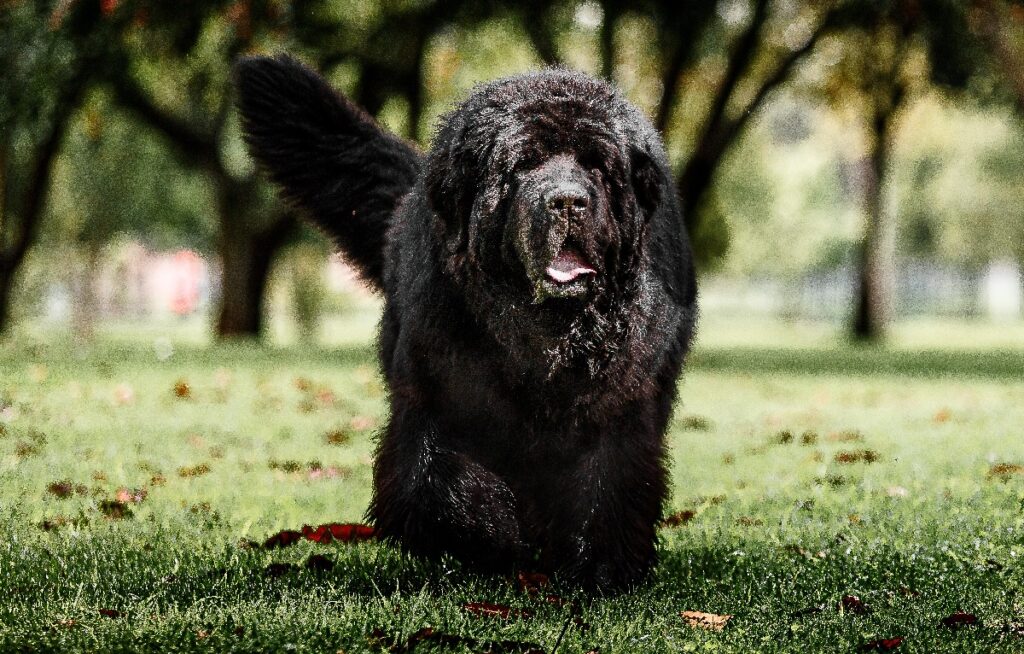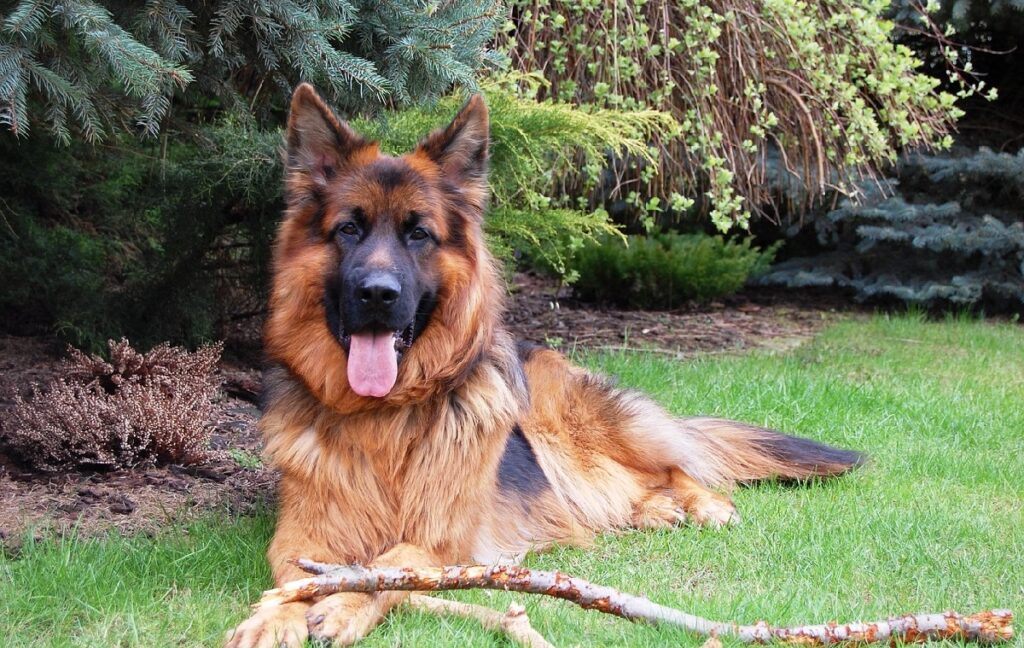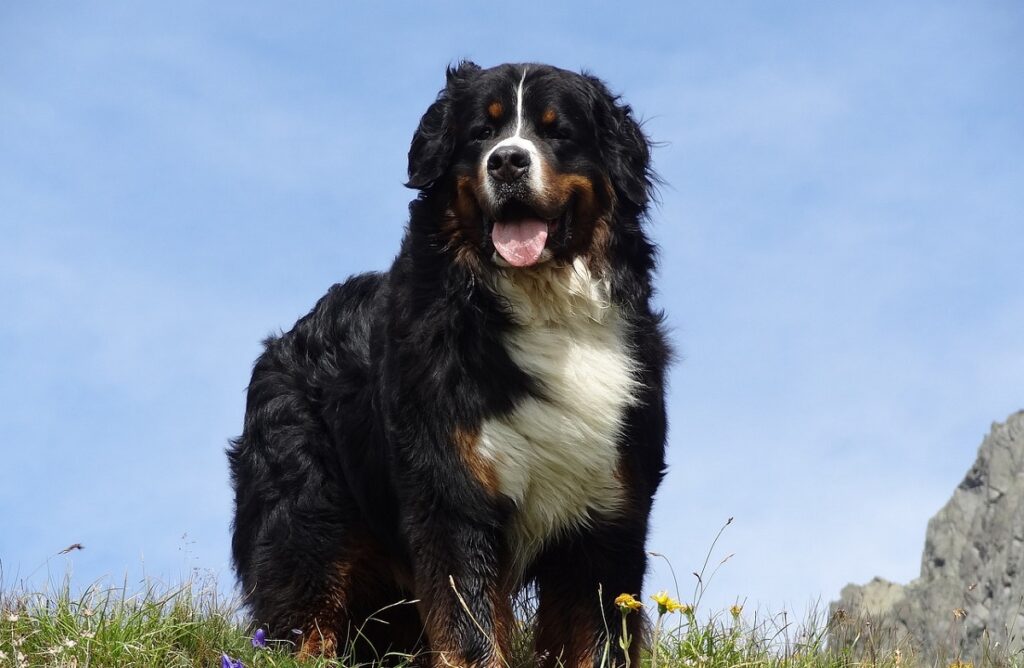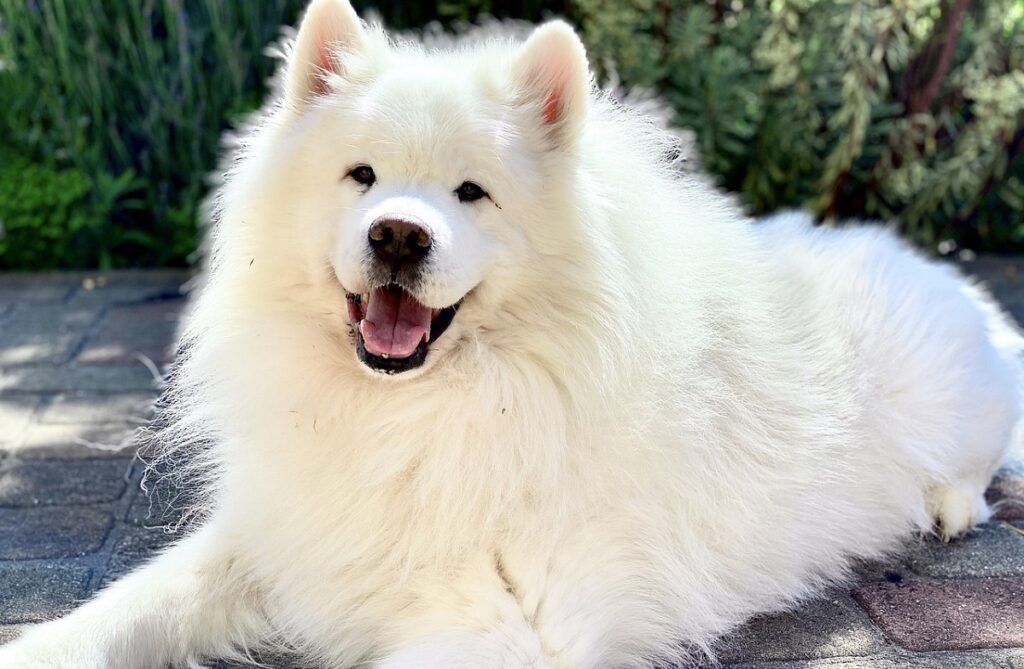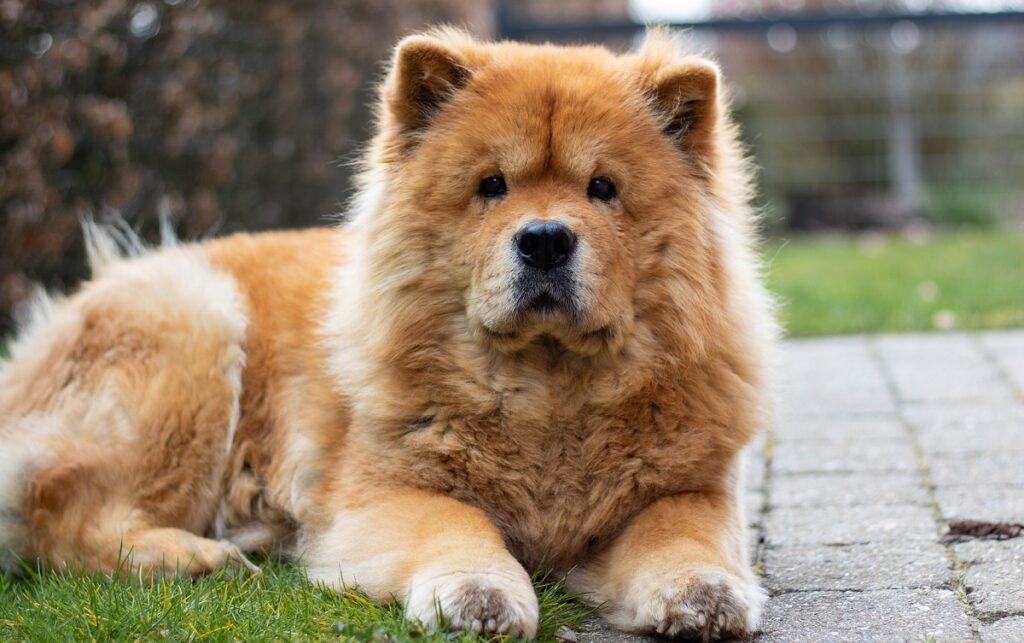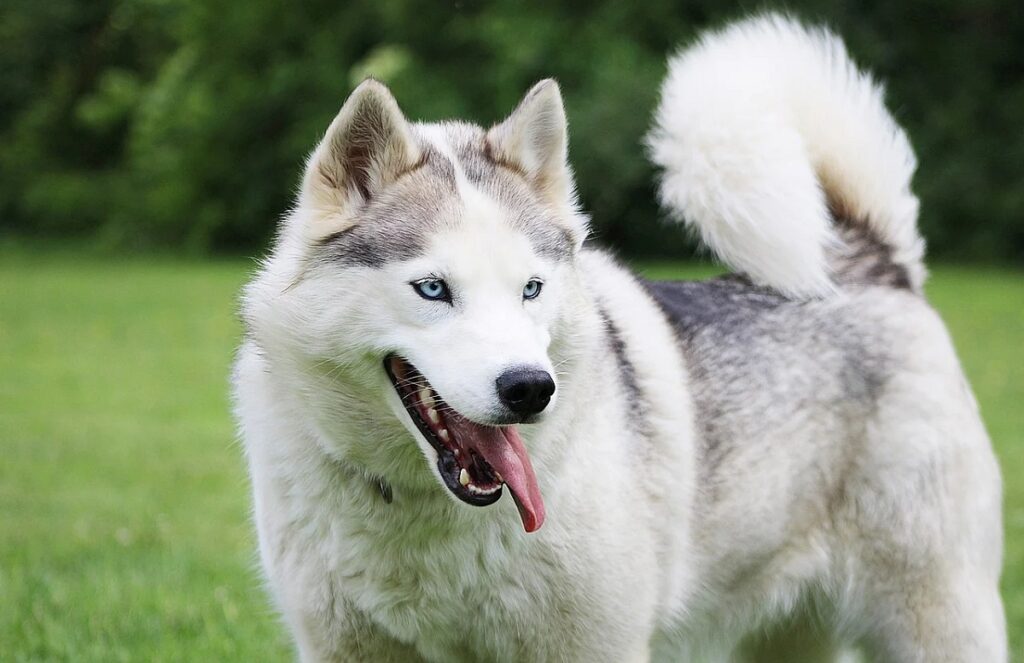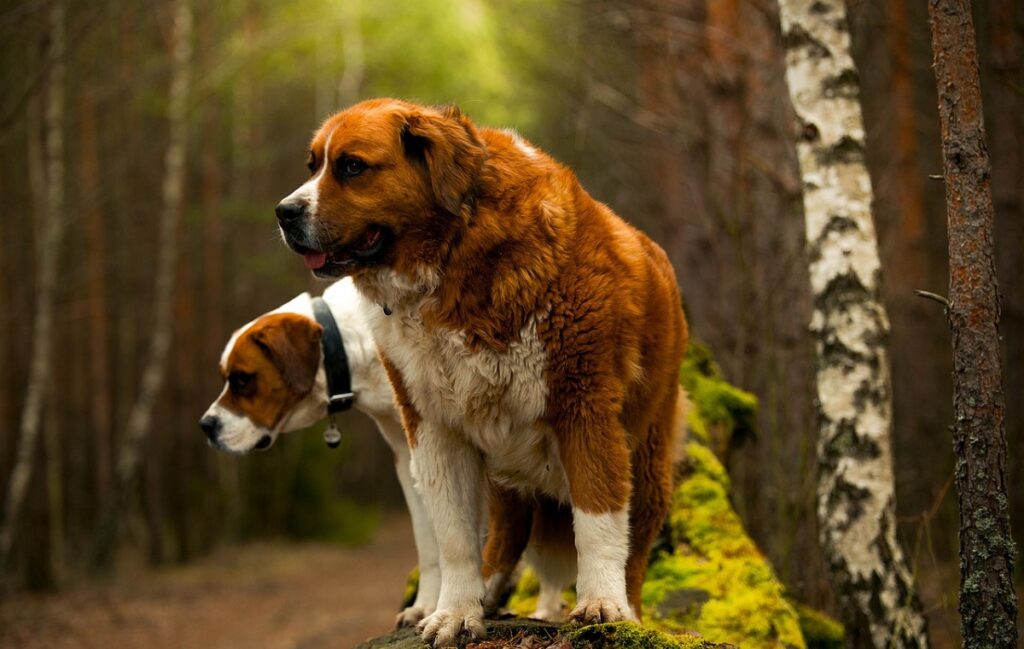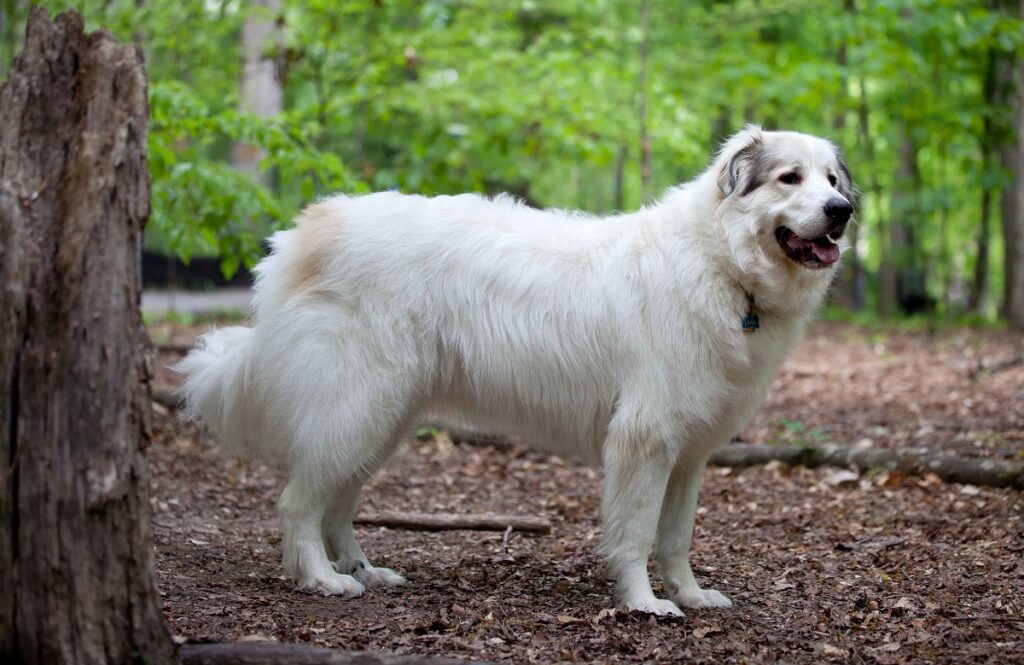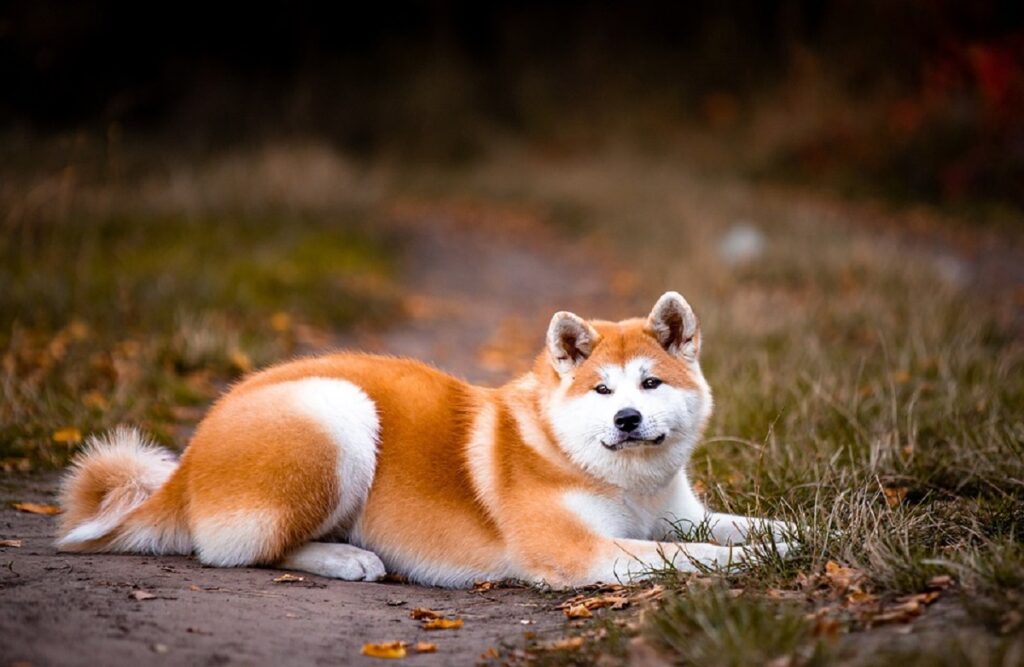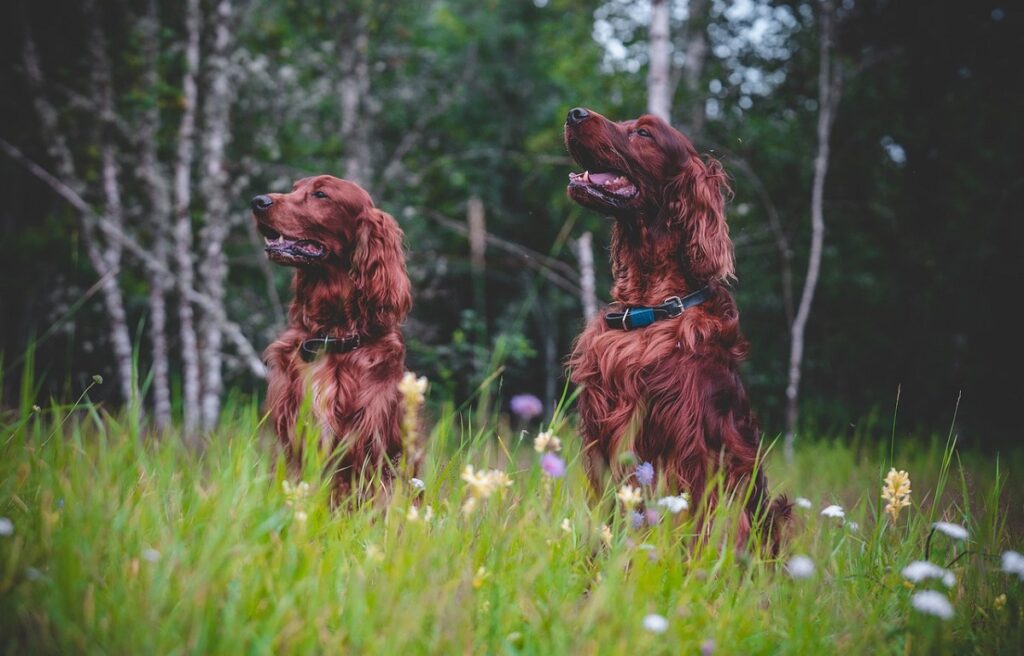Prepare for a fluffy overload! This list of 16 big, fluffy dog breeds is guaranteed to melt your heart. From gentle giants to playful fluffballs, these dogs are more than just pets; they’re cuddly companions, furry friends, and walking teddy bears. If you’ve ever dreamed of snuggling up with a cloud of fluff, then look no further. Get ready to meet the breeds that redefine the meaning of “cuddle buddy” and discover which one might be the perfect fluffy addition to your family.
Is there anything better than smushing your face into a big fluffy dog? We think not. That’s why we want to take you on a journey through billowing clouds and soft snuggles to a world of dogs that go “Poof!”
Before the sleek greyhounds and great Danes stand up in the back of the room in protest, let me just say… All dogs are gorgeous! But there’s something about a fluffy dog that gets an “Oochy cootchie” reaction out of us every time.
“Feathery,” “Silky,” “Puffy,” and “Downy” are all words to describe something soft, and we can’t think of better examples of them than dogs. From poodles to Chow Chows, we have your favorite fluffies right here.
So snuggle in with a downy pillow and get comfy. You’re in for a treat.
What Leads to a Dog’s Fluffiness
You could call it genes or breed or luck, but some dogs just have it… Fluffiness. And good fluff starts from the inside out. Make sure you’re feeding Pluto a nutrient-rich dog food so he can strut down the dog walk with his fluff in style.
Next, who among us has the money to get our fuzzy ones into the groomer weekly? Me neither. So get that smell-good doggie shampoo out and your handy-dandy blow dryer. It’s time to wash your dog.
First, be prepared. Get your tools out including:
- Shampoo
- Conditioner (for the discerning dog)
- Slicker and/or pin brush
- Cotton
- Leash
- Blow dryer
- Towels
Next, put the towels on the floor. You’re welcome. Then, get the water temperature right at lukewarm. If you’re doing it outside, make sure it’s a sunny day so the water’s not freezing cold.
Now, attach the leash to something in the tub or something in the yard. This will do you a big favor when Scooter tries to flee every time you go to grab the shampoo bottle.
Put the cotton in your dog’s ears. Now it’s time to get scrubbing. Start from the top of the head and squeeze the shampoo throughout your dog’s hair. Don’t forget to wash the area between the toes as well as the “private areas” under the tail and below the belly.
Rinse off, but not completely, and shampoo again. Now, if you’re like me, your sweet one has been around you using the blow dryer and won’t freak out when you turn it on. If he has a problem with it, just let him air-fluff while you brush or run your fingers through his hair.
Now, let’s get into some big fluffy dog breeds. Be aware – The “Aww” factor is real.
Big Fluffy Dog Breeds
1. Old English Sheepdog
Let’s start off with a bang and introduce the herding group dog that can weigh up to 100 lbs. These beauties are excellent family dogs and are great with children. If you have extra time on your hands, this is the dog for you since grooming him will be a second job.
That fluff can get unmanageable quickly, so frequent brushings are necessary. Going from a multipurpose farm dog to the perfect companion and show dog is hard work. This well-mannered dog is a bit territorial and likes to hang out with the ones he loves. Since big fluffy dog breeds are soft and cuddly, it’s a win/win.
In England, in the 1800s, there was a tax on many dogs to differentiate wealth. Working dogs were exempt, so the OESs tails were “bobbed” to avoid taxes. That tradition continues until today (even though we think it’s rude and unnecessary).
We do recommend you go buy some stock in lint rollers. You’re gonna need it.
2. Golden Retriever
Lord Tweedmouth (no joke) developed this dog with the glorious hair in the Scottish Highlands in the mid-1800s. He wanted the ideal gun dog to use at his estate. Sport hunters have been happy ever since.
This born-to-be-in-a-family sweetie is about as amicable as a dog can get. Eager to please, they’re active in search-and-rescue efforts and guides for the blind. They’re wonderful with kids, elders, and other animals… they’ll even like your grumpy neighbor.
I happen to adore my nephew’s golden, who leans on me and “wheezes” when I give him neck rubs. He could be a runway model with all that fluffy hair. You’ll need to be on your toes about grooming since it can actually become heavy on their bodies.
And I would think whoever invented the game of fetch made it just for a golden retriever. Let that be your go-to game after bathtime.
3. Alaskan Malamute
These big guys – males can weigh up to 85 lbs – must know how to eat right. Their life expectancy is 10-14 years, which, for a large dog, is a long time. You can probably pick them out of a dog lineup by recognizing its curled tail that goes up over its back.
These stout dogs with the thick double coat were originally Arctic sled dogs. They know a thing or two about working hard. They’d rather howl than bark and, inherently, love to dig. Just give them a designated spot and let them go for it. These big fluffy dogs will be quite appreciative.
According to AKC, the breed’s name is derived from the Mahlemiut, Inuit people who lived in Alaska. They aimed to develop a dog who could haul heavy loads across long distances. Enter the malamute. In 1933, they accompanied Adm. Richard Byrd on his Antarctic expedition. (Thank goodness for those fur coats.)
4. Newfoundland
A male Newfoundland can weigh up to 150 lbs. His hair is probably 50% of it. (Little joke there.) Newfies are so good with children they call them “nanny dogs” since their happy place is wherever the kids are.
But their second greatest passion is swimming. Newfoundland have webbed toes and a water-resistant coat, which made them perfect for retrieving fishing nets off the shores of mainland Canada.
Big dog breeds with dense coats can stay warm in the water. This video shows the Newfies superpower in action and is quite remarkable. If you ask me, these dogs are fluffy, fun, and fabulous.
5. German Shepherd
Think German shepherds aren’t fluffy? Have you petted one recently? They have quite the fluff.
These herding group heroes have saved countless lives during their relatively short history in America. In the late 1800s, a German cavalry officer, Captain Max von Stephanitz, developed the GSD’s ancestors to be top herders. In the early 1900s, the German Shepherd became popular in the US and has shown off ever since.
The preferred dog of law enforcement and the military has been in no small part due to von Stephanitz’s promotion of the breed to be the perfect K-9 worker.
Their big hearts also go into being perfect family watchdogs, but do prefer to be close to the alpha of the pack. They’re not so keen on canines of the same gender, but with early socialization, that can be remedied.
GSDs are one of the world’s most recognizable dogs and are highly respected. If you want an obedient, crazy intelligent, and yes, fluffy dog, this one’s for you.
6. Bernese Mountain Dog
A Bernese mountain dog is all that, and a bag of chips. Topping out at 115 lbs., they need a steady, firm hand that’s at the ready with a positive reinforcement technique.
You could get lost in their fluffiness, and if you don’t have a heavy-duty vacuum cleaner, you might need to look for a different dog. They’re double-coated, which means they have a thick undercoat with a longer outer coat that was developed for Swiss Alps weather.
BMDs wore many hats for the Swiss. They worked around farms hauling carts. Their good nature makes them entirely patient, which translates to letting kids climb all over them. They’re great family dogs.
They socialize well with other animals and are, basically, the perfect pet. If you don’t mind a behemoth canine being in your personal space, you could do far worse than a Bernese Mountain dog.
7. Samoyed
Or what I like to call “White fluff balls.” These beauties are practically small compared to the dogs we’ve talked about since males only weigh between 45-65 lbs. They make up for it with their life expectancy and can live 12-14 years. They’re one of the fluffiest dog breeds out there.
Their white coat stands out from the body with a very full undercoat, making the beautiful dog striking in appearance. They were developed to herd reindeer and to pull sleds. They’re an ancient breed developed by nomadic tribes in Siberia. Ah, that’s why all the hair.
In the late 1800s, Samoyeds came to England and were sometimes gifted by the Czar of Russia. (Guess you could call them royalty.) They do well in families and are happiest when they have jobs to do.
So if you want a soda from the fridge, teach the Samoyed. No, really. They do need to pull, assist, or lift, so a creative family who is accustomed to training large dogs would be ideal for them.
8. Chow Chow
I had my own Chow once, and I think the word “aloof” just about covered her personality. Of course, I was madly in love with her (Mocha), but if she wasn’t in the mood for snuggles, I needed to look elsewhere.
A Chow Chow is fluffy hair with a dog attached. Their blue-black tongues, wrinkled faces, and lion-like manes are practically famous. Dutifully loyal to their human families, they could take or leave strangers and stroll around with an air of importance.
They’re one of the world’s oldest breeds, which is proven by artifacts discovered of China’s Han Dynasty. (But there’s even more evidence of the breed going back further.)
Chows came to America in the 1890s and, in 1903, were admitted to the AKC. If you’re a loner or just not really looking for a lap dog, look them up. It might be a perfect match.
9. Siberian Husky
The dense double coats of the Siberian Husky serve them well as they were bred to pull sleds. Their furry tails can be drawn into a curl or held straight back. Your grooming prowess would be put to the test with these dogs, especially during shedding season. The good news is, since their coats are a bit shorter than some of the other northern dogs, they don’t mat as easily.
Classic northern dogs; they enjoy digging to make sure there’s a cool place to lie. Huskies are smart but also have a stubborn streak, so need to be taught their place in the human pack as early as possible.
They love to run, go figure and would be fairly miserable if they weren’t able to do so on a regular basis. Only active people, joggers would be perfect, need apply for this athletic canine.
10. Saint Bernard
Friendly, furry, and charming, these behemoths aided people in the Alps who were in peril. In the 1000s, monks developed them to watch over pilgrims traveling to Rome.
They saved the lives of more than 2,000 people in 300 years at the hospice founded by St. Bernard of Menthon.
There are two types of Saint Bernard: Longhaired and smooth. Bathing them might take an afternoon, so make some time for these dogs that can reach 180 lbs. and stand 30” tall.
Today, Saint Bernards are companions worldwide and also get spoiled at the St. Bernard Museum in the Swiss village of Martigny.
11. Collie
(Is it just me, or does your mind immediately think “Lassie,” too?) There are two types of collies: The full-coated ‘rough’ collie (long beautiful coat) and the sleek ‘smooth’ one (short, dense, and flat).
Collies are cat, dog, and kid-friendly, but as excellent herding dogs, they might try to corral any one of them. Their coloring has white, tan, and/or black in all the right places, and some look lion-esque with the fluff on their chests and neck.
Collies will follow you to the moon and back, so playing hide-and-seek might be futile.
12. Standard Poodle
Poodles must be groomed almost daily just to control all that fluff and to keep matting at bay. (And you thought Kim Kardashian was high-maintenance.) They’re water retrievers and take to water like a bear takes to a cave. Their clips (haircuts) were developed so a thick coat of fur would cover their joints and chest to keep them warm while in cold water. (Hill’s Pet)
There are three types of these elegant canines:
- Standard poodle – Over 15” and 45-70 lbs.
- Miniature poodle – 10” to 15” and 12-20 lbs.
- Toy poodle – Less than 10” and 5-7 lbs.
They may appear to be standoffish, but you might just be jealous. Poodles thrive on attention. The smaller variety can be aggressive to strangers and other dogs.
So get those babies around strange dogs and people while they’re still puppies. Early socialization will serve them and you well. (Hill’s Pet)
13. Great Pyrenees
These all-white angels, who can be 100+ lbs., are mellow companions and are immensely strong. I had a mixed Great Pyr for almost 15 years, and he was my favorite dog of all time. (Out of many dozens, that’s saying a lot about their temperament and the way they’re so easy to love.)
Their double coats are dirt- and tangle-resistant, so they don’t need grooming too often. Thorough brushing with a pin or slicker brush once a week will keep them model-ready. (Get ready for some serious hair everywhere. My dog, Kid, shed so much I could have made another dog out of it.)
These working group dogs have tons of energy and know all about a hard day’s work. They were bred centuries ago to be shepherd/herding dogs in the Pyrenees Mountains.
If you have a chance to adopt one, and you have the time and patience for a huge dog, go for it. You’ll have a bestie for life!
14. Akita
This big fluffy dog breed was bred to hunt bears. Their coats are very dense and short to medium in length. Their thick soft undercoats and long, coarse outer coats (or guard hair) make them the perfect dog to tolerate cold climates.
Some say their personalities are a bit snippy, but they’re just particular about the people they surround themselves with. Strangers aren’t his favorite people.
They’re fastidious about being clean, and they’re odorless, so you can get by giving them a good brush once a week between baths.
These independent dogs would fit in nicely with someone who has no other pets. So, if you have a pet menagerie, you might want to look elsewhere.
15. Irish Setter
This sporting dog can be picked out of a crowd by its bright, mahogany-colored coat. They’re shiny with feathering on the chest, legs, ears, belly, and tail.
In Ireland, in the early 18th century, Irish setters were developed to locate birds for hunters. They’re good-tempered, and families love them.
Here are some other delightful characteristics:
- Affectionate
- Warm and friendly
- Gentle
- Great hunters
- Playful
You might need to rein in their exuberance for life at times since even going to the mailbox can produce leaps of excitement. Or better yet, let them be. Don’t we all need to be that excited about life?
16. Tibetan Mastiff
Although these big fluffy dogs are incredibly intelligent, they don’t perform so well in obedience classes. It could just be a bother to them, and who likes going to school anyway?
For fluff maintenance, weekly brushing with a slicker or pin brush will keep them looking lovely. Tibetan Mastiffs are double-coated with heavy, wooly undercoats and coarse guard hair. A wide-tooth comb will come in handy to remove tangles on their tails, manes, and breeches.
Their history is cloaked in mystery, but we know for sure they’re one of the most ancient canines there are. Newsworthy, for sure.
Unique Care Requirements for Large, Fluffy Canines
You may want to get your Ph.D. in grooming to maintain a fluffy dog’s appearance and comfort. Most of them have undercoats, which is a second layer of fur they have for insulation.
When it’s mentioned they ‘blow out’ their coats, it means they shed their undercoats in the spring and fall. (And if you’ve never seen a snowfall of hair, you’re missing out.)
A few fluffy dog breeds don’t shed a lot and are considered by some to be hypoallergenic – Or an answered prayer for people with allergies.
Grooming will become part of life if you’re the guardian of a dog with fluff. Mats and tangles can become painful for them if not kept in check. They require frequent brushing and regular grooming, whether it be professionally or at home.
They were mostly bred to exist in snow and cold climates, so here are a few necessities:
- Keep them cool. Never leave them chained outside. (Or any dog, for that matter.)
- Make sure they don’t get overheated while exercising. Have plenty of water on hand and know when to stop.
- Invest in a top-of-the-line vacuum cleaner.
- Air conditioning and a cool tile floor will be their best friends, so try to comply if possible.
- Take them for regular vet visits since arthritis, joint problems, and other ailments can be prevalent in big fluffy breeds.
FAQs
Which Is the Most Huge and Fluffy Dog Breed?
The Saint Bernard is one of the largest fluffy dog breeds. It can weigh up to 180 lbs. and reach 30” in height.
What Is the Biggest Dog to Cuddle?
Great Danes are huge and are great snuggle buddies. They love it. They can weigh up to 120 lbs. and grow to be 32” tall.
Which Fluffy Dog Is the Most Difficult to Maintain?
Poodles need consistent grooming to prevent matting and tangles. But they’re worth the time, effort, and money you put into them.
Is Adopting a Fluffy Dog the Right Choice?
You can’t go wrong with adopting a big fluffy dog. Many of the breeds are friendly, intelligent, and love the family dynamic.
Conclusion
By now, if you don’t want to run out and adopt a big fluffy dog, I haven’t done my job. But I’m hoping you see what a wonderful addition they can be to your life. And it’ll probably only take about a day to see how you lived without one for so long.
Upkeep and maintenance, pshaw! These dogs are worth every ounce of effort you give to them. Just keep saying this mantra every day: “I love hair. I love hair.”
From the majestic Samoyed to the playful Bernese Mountain Dog, these 16 fluffy breeds offer an irresistible combination of charm and cuddliness. Their luxurious coats aren’t just for show; they provide warmth and contribute to their distinct personalities. Whether you’re seeking a loyal companion for snowy adventures or a gentle giant for family life, these fluffballs offer a unique bond and an abundance of love. Just be prepared for a lot of brushing and a whole lot of heartwarming moments.

